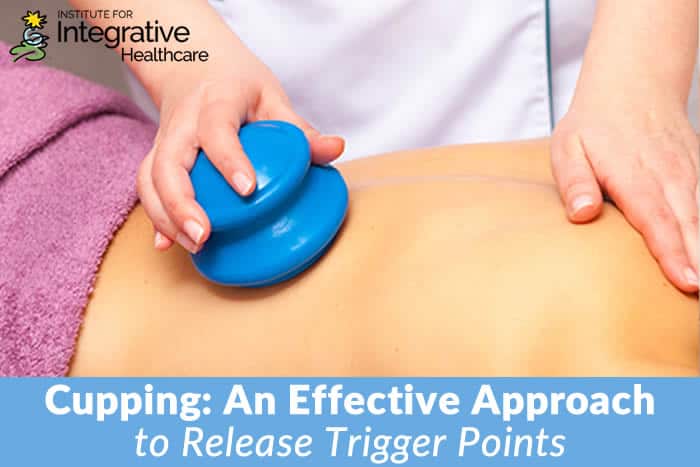

What Is A Trigger Point?
Many people have experienced the pain of trigger points, even if they do not know what trigger points are. So, what is a trigger point? Not to be confused with acupressure points or ‘pressure points,’ trigger points are typically found in muscles that are overworked or injured from falls, strains, and sprains. A major cause of trigger points is submaximal isometric muscle contraction (contraction without shortening) of muscle (Davies, p. 26). When we are holding a static position for long periods of time we are contracting several muscles without shortening them. This is the perfect setup for trigger points and myofascial pain, as anyone who sits at a computer all day can attest!
Trigger points, per Janet Travell and David Simons, are “hyperirritable spots in skeletal muscle that are associated with a hypersensitive palpable nodule in a taut band (of muscle)” (Davies, p. 10).
To qualify as a trigger point, certain criteria must be met:
- the point should be tender upon compression
- there must be a taut band of muscle
- there must be referred pain
- and the therapist should be able to reproduce the pain patterns through compression of the trigger point (Zihni Chirali, p. 232).
In Traditional Chinese Medicine (TCM), trigger points are associated with stagnation of Blood and/or Qi at a musculoskeletal level (Zihni Chirali, p. 231).
How To Release Trigger Points Traditionally
The traditional technique for how to release trigger points is to compress and hold, applying ischemic compression. This technique forces the blood and lymph out of the area and signals the trigger point to release. One of the problems with using this technique is that the therapist must hold significant pressure on the trigger point for prolonged periods of time, which can become painful for both the therapist and the client.
New Technique To Release Trigger Points
It has been shown that a more effective way to release trigger points is to apply a series of strokes across the point and the taut band, flushing out the blood and lymph while allowing fresh blood to move into the tissue. This technique removes cellular waste from the prolonged muscle contraction while bringing in fresh nutrients and oxygen. This new technique is a more effective method for releasing trigger points, both active and latent.
Massage Cupping For Trigger Points
Imagine now, how much more effective cupping for trigger points is in ‘drawing’ fluid, both blood and lymph, through the application of negative pressure. Also, once the cup is placed, it can be gently ‘pumped’ to move the fluid even more. The pistol-handle style of cups allows for greater control of the strength of suction when applying cups over trigger points. It’s important to note that cupping should not be applied to all trigger points, as some locations are not well suited to the technique.
To perform trigger point cupping, begin by applying a thin layer of oil or cream, as this allows for a good airtight seal when the cups are applied. If you are using fire to create the suction in your cups, be sure to follow all safety protocols pertaining to the use of fire in the office:
- Cover the client’s hair.
- Have water on hand for the used gauze pads.
- Have water on hand for use in an emergency.
Also, whatever type of cups (glass or silicone massage cups) you are using, be sure to follow all sanitation and sterilization guidelines for cupping. Ensure that the client fully understands the risks and side effects of cupping for trigger points before you begin and that you have obtained informed consent.
Cupping Massage
As trigger points are often located deep in the muscle tissue, it is often necessary to use medium to strong cupping massage therapy to get them to release. Medium and strong massage cupping moves the Qi, Blood, and lymph fluid, which is the therapeutic effect you are looking for when cupping trigger points. While static cupping is certainly effective, moving cupping can be used, especially when there is more than one trigger point in an area, as moving cupping is especially effective for musculoskeletal complaints, muscle relaxation, and sports injuries. Also, as the name suggests, moving cupping is also excellent for ‘moving’ stagnant lymph fluid and blood out and fresh blood into an area. Not only does cupping massage move the lymph and blood, it is also excellent at loosening the myofascial tissue around the trigger point, allowing for further movement of fluids after the treatment.
Choosing the trigger points to treat is done in much the same way as when treating them manually. Trigger points cause referred pain in predictable patterns. By being familiar with these patterns, or using a trigger point chart, you can match the pain pattern to its trigger point. Once you have identified and found the point, apply the appropriate massage cupping technique.
Massage Cupping Benefits
Most massage therapists are experienced with locating and treating trigger points throughout the body. By incorporating the use of suction cup massage when treating trigger points, we can offer the added benefits of increased movement of lymph fluid and blood, and deeper softening of myofascial tissue in the area of the trigger point we are treating.
Recommended Study:
Cupping for Massage Therapists
Cupping Therapy: A Step-by-Step Approach
Myofascial Release
Trigger Point Therapy











